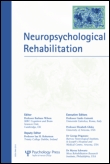
NEUROPSYCHOLOGICAL REHABILITATION
Scope & Guideline
Advancing the Science of Cognitive Recovery
Introduction
Aims and Scopes
- Cognitive Rehabilitation:
The journal emphasizes cognitive rehabilitation strategies for individuals with brain injuries, exploring various interventions aimed at enhancing cognitive functions such as memory, attention, and executive functioning. - Emotional and Psychological Well-being:
Research on the psychological aspects of recovery, including the relationship between emotional distress, depression, anxiety, and cognitive performance in patients with neurological disorders. - Family and Caregiver Involvement:
The journal recognizes the importance of family dynamics and caregiver perspectives in the rehabilitation process, investigating how these relationships impact recovery and adjustment. - Innovative Rehabilitation Technologies:
A growing focus on the use of technology in rehabilitation, including virtual reality, mobile applications, and telehealth solutions, to enhance cognitive and physical recovery. - Multidisciplinary Approaches:
Encourages collaboration among various disciplines, including psychology, occupational therapy, speech-language pathology, and neurology, to create comprehensive rehabilitation strategies.
Trending and Emerging
- Virtual Reality and Technology Integration:
An increasing number of studies are exploring the integration of virtual reality and other technologies into rehabilitation practices, demonstrating their potential to enhance engagement and outcomes in cognitive and physical rehabilitation. - Personalized Rehabilitation Approaches:
A notable trend towards individualized rehabilitation strategies that consider the unique needs and circumstances of each patient, moving away from one-size-fits-all models. - Post-Traumatic Growth and Resilience:
Research into post-traumatic growth is gaining attention, focusing on how individuals can develop new strengths and coping mechanisms following neurological injuries. - Family-Centered Care Models:
Emerging emphasis on involving family members in the rehabilitation process, recognizing their critical role in supporting recovery and adjustment. - Interventions Addressing Emotional Dysregulation:
A growing focus on interventions targeting emotional dysregulation, particularly in populations with brain injuries, to improve overall rehabilitation outcomes.
Declining or Waning
- Traditional Assessment Methods:
There appears to be a decreasing emphasis on traditional neuropsychological assessment methods, as newer, more dynamic assessment tools and approaches gain traction. - Generalized Rehabilitation Models:
The focus on generalized rehabilitation models that do not account for individual differences is waning, with a move towards more personalized and tailored rehabilitation strategies. - Longitudinal Studies of Recovery:
While longitudinal studies were once a staple of the journal, there is now a shift towards more immediate impact studies and pilot trials, possibly due to the need for quicker responses to emerging rehabilitation needs. - Pharmacological Interventions:
The exploration of pharmacological interventions in neuropsychological rehabilitation seems to be declining, as the focus shifts toward behavioral and cognitive interventions.
Similar Journals
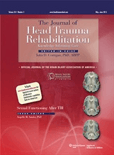
JOURNAL OF HEAD TRAUMA REHABILITATION
Empowering clinicians with cutting-edge research.JOURNAL OF HEAD TRAUMA REHABILITATION, published by LIPPINCOTT WILLIAMS & WILKINS, is a premier peer-reviewed journal dedicated to advancing the science and practice of managing head trauma and its rehabilitation. With an ISSN of 0885-9701 and an E-ISSN of 1550-509X, this journal has been a significant resource since its inception in 1986 and continues to provide critical insights into neurological and rehabilitative care, particularly as it spans the years until 2024. The journal boasts impressive rankings, including Q2 in Neurology (Clinical) and Q1 in both Physical Therapy, Sports Therapy and Rehabilitation, and Rehabilitation for 2023, underscoring its impact and relevance in the field. It is well-regarded in Scopus ranks as well, holding a rank of #27 out of 161 in Medicine Rehabilitation and #47 out of 247 in Health Professions. With no open access option available, the journal invites subscriptions and affiliations from academic institutions, healthcare professionals, and researchers committed to excellence in rehabilitation practices. Aimed at enhancing clinical techniques and methodologies, the JOURNAL OF HEAD TRAUMA REHABILITATION is essential reading for anyone invested in the recovery and rehabilitation of individuals with head injuries.

Cuadernos de Neuropsicologia-Panamerican Journal of Neuropsychology
Connecting researchers and clinicians for impactful discoveries.Cuadernos de Neuropsicologia-Panamerican Journal of Neuropsychology is a premier open access journal dedicated to advancing the field of neuropsychology through the dissemination of high-quality research. Published by NEUROPSICOLOGIA CL in Chile, this journal has been a vital resource for the academic community since its inception in 2007. With a focus on various aspects of neuropsychological theory and practice, the journal aims to bridge the gap between research and application, addressing key issues in diagnosis, treatment, and rehabilitation of cognitive disorders. By providing a platform for innovative studies, systematic reviews, and compelling case reports, Cuadernos de Neuropsicologia plays an instrumental role in shaping the future of neuropsychology in the Pan-American region and beyond. Researchers, clinicians, and students alike will find this journal invaluable for staying informed on the latest trends and findings in their field.
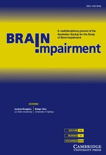
Brain Impairment
Fostering innovation in understanding brain impairments.Brain Impairment, published by Cambridge University Press, is a pivotal academic journal dedicated to advancing the understanding of neurological conditions and cognitive processes. With its ISSN 1443-9646 and E-ISSN 1839-5252, this esteemed journal has been at the forefront of research in the fields of Behavioral Neuroscience, Cognitive Neuroscience, and Neuropsychology since its inception in 2004. Covering a broad scope, it addresses critical insights into brain function, impairments, and therapies, making it a valuable resource for researchers, clinicians, and students alike. Brain Impairment holds various rankings, including Q4 in Behavioral Neuroscience and Q2 in Speech and Hearing, reflecting its significance in the academic community. While the journal operates under print access, its rich content serves as an essential reference for professional development and scholarly discussion in the UK and beyond. Researchers and practitioners can rely on this journal to provide cutting-edge research and reviews that inform clinical practice and shape future studies in neurology and cognitive neuroscience.
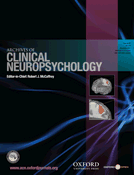
ARCHIVES OF CLINICAL NEUROPSYCHOLOGY
Bridging Disciplines: The Nexus of Psychology and NeurologyARCHIVES OF CLINICAL NEUROPSYCHOLOGY is a premier academic journal dedicated to the vital intersections of clinical psychology, neuropsychology, and psychiatry, offering researchers and clinicians a platform to publish cutting-edge findings and comprehensive reviews. Published by Oxford University Press, the journal aims to advance the understanding of the cognitive and psychological aspects of neurological conditions through rigorous empirical research and innovative methodologies. With an impressive range of quartile rankings, including Q2 in Clinical Psychology and Neuropsychology, the journal stands out for its commitment to enhancing clinical practices and improving patient outcomes. Although it does not offer open access, its reputation is underscored by a competitive impact factor, making it a critical resource for professionals in the field looking to stay informed on the latest developments. The journal has been a respected outlet since 1986, and as it continues into 2024, it remains a beacon for scholarly discourse in neuropsychology and mental health.

Journal of Neurorestoratology
Transforming lives with groundbreaking neuro-research.The Journal of Neurorestoratology, published by TSINGHUA UNIV PRESS, stands as a pivotal resource in the evolving fields of neuroscience and rehabilitation. With focus areas encompassing cognitive neuroscience and neurological disorders, this Open Access journal, launched in 2013, fosters unimpeded global access to cutting-edge research and breakthroughs in neuro-restorative techniques and therapies. Although it is relatively new, it has demonstrated its potential impact within the academic community, ranking in the 51st percentile for Medicine _ Rehabilitation and contributing novel insights in the realms of speech and hearing, neurology, and cognitive neuroscience. With its commitment to disseminating innovative findings and promoting interdisciplinary collaboration, the Journal of Neurorestoratology plays a crucial role in advancing our understanding and management of neuro-rehabilitation, making it a valuable platform for researchers, healthcare professionals, and students alike.

NEUROREHABILITATION
Pioneering research for a brighter future in neurological recovery.Welcome to NEUROREHABILITATION, a premier journal dedicated to advancing the field of rehabilitation, specializing in neurology and physical therapy. Published by IOS PRESS, the journal has established itself as a crucial platform for disseminating high-quality, peer-reviewed research since its inception in 1991. Located in the Netherlands, NEUROREHABILITATION has achieved significant recognition within the academic community, reflected in its impressive impact factor and Scopus rankings, including a Q2 categorization in Rehabilitation and Physical Therapy, highlighting its relevance and influence in these essential domains. With a commitment to enhancing clinical practices and outcomes for individuals with neurological conditions, this journal serves as an invaluable resource for researchers, clinicians, and students alike. Although it currently operates under a subscription model, NEUROREHABILITATION continues to contribute meaningfully to the ongoing dialogue in rehabilitation sciences, making it a key player in shaping the future of therapy and patient care.
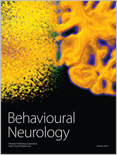
BEHAVIOURAL NEUROLOGY
Charting New Territories: The Dynamic Field of Behavioral NeurologyBEHAVIOURAL NEUROLOGY is a distinguished open-access journal published by Hindawi Ltd, dedicated to advancing the field of neurology and neuropsychology since its inception in 1988. With ISSN: 0953-4180 and E-ISSN: 1875-8584, this journal provides a platform for innovative research and interdisciplinary studies that explore the intricate connections between behavior and neurological processes. Housed in the Netherlands, BEHAVIOURAL NEUROLOGY enjoys a commendable reputation, boasting impressive quartile rankings of Q2 in various medical and psychological categories, reflecting its significant contribution to the literature with a focus on clinical neurology and physiological psychology. The journal's rigorous peer-review process ensures that published works meet high academic standards, making it an essential resource for researchers, clinicians, and students seeking to deepen their understanding of neurological disorders and cognitive function. As of 2023, it ranks in the 80th percentile in neuropsychology, further underscoring its impact and relevance in the scientific community. For those interested in accessible knowledge, BEHAVIOURAL NEUROLOGY's commitment to open access facilitates the dissemination of groundbreaking research, allowing a wider audience to engage with critical advancements in the field.

Applied Neuropsychology-Adult
Connecting research and practice in neuropsychology.Applied Neuropsychology-Adult is a premier journal published by Routledge Journals, Taylor & Francis Ltd, dedicated to advancing the field of neuropsychology with a particular focus on adult populations. Since its inception in 2012, this journal has been a vital platform for disseminating innovative research, reviews, and clinical insights into the cognitive and psychological processes that influence adult behavior and functioning. With an impressive Scopus ranking, including Q3 status in both Developmental and Educational Psychology and Neuropsychology and Physiological Psychology, it demonstrates a commitment to high-quality scholarship that informs both clinical practice and theoretical understanding. Researchers, clinicians, and students alike will benefit from the journal's commitment to open access, providing broad access to valuable knowledge in the domain of neuropsychology. As it converges towards its 2024 milestone, Applied Neuropsychology-Adult continues to be an essential resource for those seeking to deepen their understanding of neuropsychological processes and their application in real-world settings.

PERCEPTUAL AND MOTOR SKILLS
Illuminating the Link Between Perception and ActionPERCEPTUAL AND MOTOR SKILLS is a distinguished academic journal published by SAGE Publications Inc, primarily focusing on the disciplines of Experimental and Cognitive Psychology as well as Sensory Systems. With a legacy dating back to its inception in 1962 and continuing through to 2024, this journal serves as a vital resource for researchers and professionals in understanding the complexities of perception and motor processes. Although it currently holds a Q3 status in major categories, it consistently contributes to the discourse of these critical fields, ranking within the 40th and 29th percentiles for its respective categories according to Scopus metrics. While not an open-access journal, PERCEPTUAL AND MOTOR SKILLS remains a reputable platform for disseminating research findings, ensuring that insights on human perception and motor function are accessible to a broader academic audience. With an aim to advance scholarly discussion and foster innovative research, this journal is an essential read for those endeavoring to explore the rich interplay between perceptual mechanics and motor skills.
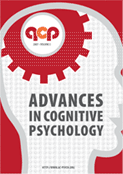
Advances in Cognitive Psychology
Fostering Global Insights in Cognitive PsychologyAdvances in Cognitive Psychology is a premier peer-reviewed journal published by UNIV ECONOMICS & HUMAN SCIENCES WARSAW, dedicated to the exploration of psychological processes underlying cognition. With its open access model implemented since 2005, the journal facilitates wide-ranging dissemination of cutting-edge research across various branches of psychology, including applied, clinical, experimental, and cognitive psychology. Despite its modest standing in terms of impact factor, reflected in its Q3 and Q4 rankings across numerous subfields, it remains an important platform for emerging researchers and seasoned professionals alike, aiming to foster insight into complex mental processes and enhance understanding of behavioral patterns. The journal's commitment to accessibility empowers a diverse community of readers, including students, to engage with innovative studies and reviews, contributing to the collective knowledge within the psychological sciences. Located in Poland, Advances in Cognitive Psychology is open for submissions from worldwide researchers, encouraging a global perspective on cognition and behavior.